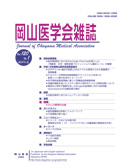

Journal of Okayama Medical Association
Published by Okayama Medical Association<Availability>
Full-text articles are available 3 years after publication.
Permalink : http://escholarship.lib.okayama-u.ac.jp/16127
The role of lymphocytes in bronchial asthma II. Effects of interferon-alpha on basophil reactivity and histamine release in bronchial asthma.
Tamura, Naohiko
Published Date
1985-02-25
Abstract
Interferon (IFN) is known to be released in viral infection. In addition to the direct effect of inflammation of the respiratory tract, the released IFN is also suspected to be an important factor in the aggravation of bronchoconstriction in bronchial asthma. The effects of IFN on morphological changes of basophils from round to pear shape and histamine release from basophils were analyzed to clarify the role of IFN in bronchial asthma. IFN alone did not affect these parameters in either healthy subjects or asthmatic patients. As a model of the basic bronchial asthma reaction, anti-IgE was added to basophils with and without IFN preincubation. The IgE mediated reaction was enhanced with IFN in basophils from atopic and non-atopic asthma patients. Furthermore, the enhancement of histamine release was observed in atopic asthma, more significantly than in non-atopic asthma. The IgG mediated reaction of basophils is considered to play a role in some asthmatic patients. IFN apparently increased reactive basophils of non-atopic asthma patients in the IgG mediated reaction. On the other hand, the histamine release from basophils was so minimal that the effect of IFN on the IgG mediated reaction was not clearly detected. While the mechanism of enhancement is still controversial, the suppressive effect of histamine release by isoproterenol in addition to anti-IgE suggest the regulation of reactive basophils by the cyclic AMP concentration.
Keywords
Interferon
Reactive basophil
Histamine release
Bronchial asthma
cyclic AMP
ISSN
0030-1558
NCID
AN00032489
